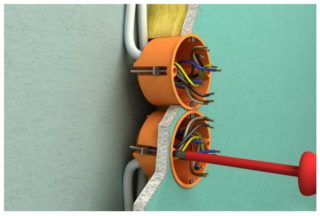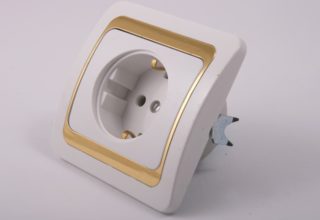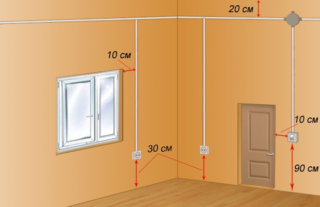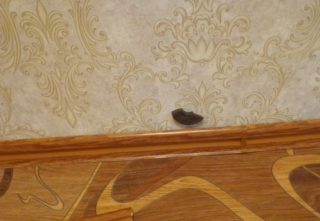Drywall is actively used in interior decoration. This is due to its advantages - the material is environmentally friendly, heat-resistant, has sound insulation. Also, drywall compares favorably with the cost. The installation rules for drywall are similar to the requirements for mounting in a concrete wall. But during operation, you need to consider a number of nuances.
Material Features
Installing outlets in drywall (GCR) does not cause special difficulties. It is easier than installing it in another material, but drywall has its drawbacks. The main minus is crumbling at work. For this reason, the use of classic self-tapping screws and percussion instruments is not allowed. Repair work is carried out only using a drill and specialized tools for gypsum plasterboard.
During installation, special installation boxes are used - socket boxes. Outwardly, they look like a plastic cup with four screws. They have a special fastening with two upper screws. The two bottom ones are needed to mount the socket itself. On the lower part there are clamping mechanisms that improve the reliability of installation.
Typically, the installation of electrical wiring and sockets is done in two ways - at the construction stage or during finishing work.
Socket and tool selection
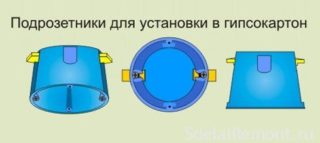 Before you fix a new outlet, you need to choose all the materials correctly. The power outlet consists of a front panel, a core and a socket box. The core is the main working mechanism. It is installed in a plastic cup, which is attached to a sheet of drywall.
Before you fix a new outlet, you need to choose all the materials correctly. The power outlet consists of a front panel, a core and a socket box. The core is the main working mechanism. It is installed in a plastic cup, which is attached to a sheet of drywall.
When buying, you need to pay attention to the diameter and other sizes of the socket. They must match the dimensions of the hole made in the wall. You should also make sure that the outlet fits comfortably into the glass.
Sockets are divided into overhead and internal. This is also worth considering when choosing. Overheads are easy to install, do not require holes and can be installed in different places. But they are unaesthetic and have large sizes.
If the socket in the drywall wall will be mounted in the kitchen or in the bathroom, you need to choose products with an appropriate degree of moisture and dust protection.
Less important factors of product selection are color, design, number of connectors (double, triple). They do not affect the technical characteristics, they determine only the appearance.
Before starting the installation, you need to take care of the equipment in advance. The main working tool is a drill with a crown. Its standard size is 68 mm. You will also need a tape measure, building level, pencil or marker, a Phillips screwdriver and indicator.
Safety precautions
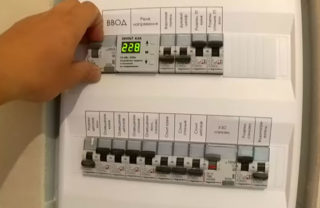
Any work with electrical wiring must be carried out in accordance with safety regulations. The current flowing in the outlet is dangerous to humans and can be fatal. For this reason, the following rules must be observed:
- Disconnect power before installing.
- Use professional tools with insulated handles.
- Check the absence of voltage on the wires using the indicator.
- Do not mount old broken sockets or wires. All materials used must be new and high quality.
- Correctly choose the cable section.
Subject to the above requirements, the operation will be safe.
Positioning
The choice of installation location for the outlet depends on several factors. There are construction specifications that must be observed, but the purpose of the outlets is also important. According to modern European standards, electrical outlets are installed at the following heights:
- At a height of 30 cm from floor level in any room.
- In the kitchen above the work area at a height of 120 cm
- For connecting a washing machine and dishwasher - 100 cm.
- Sockets for switches are mounted at 80 cm.
Also, the power point should be installed no closer than 10 cm from the door and window openings.
It is important that access to the outlet is convenient. In the kitchen, food points are often placed above the countertop. For the aquarium, they also use a high installation to connect several electrical appliances.
Socket Installation
Installation of sockets in drywall is carried out according to the following algorithm:
- Punching a hole for an outlet or a block of electrical outlets and a socket. Previously, pencil markings are made at the place of fixation. Then, with the help of a drill, the desired hole is drilled.
- Further, the sequence of actions depends on the installation technique. If the cable is already fixed in the wall, you must connect the outlet to the wires and install it in the wall. If the wires have not yet been laid, you need to do the gates in the drywall. A wire is laid in them in a corrugated tube or cable channel and is fixed with a special building compound (for example, alabaster). The ends of the wiring are displayed in the installation location of the outlet.
- Installation of a socket. A hole for wires is cut through the back of the glass. From the hole made, wires are removed and laid through the glass. Then the socket should be put and fixed in drywall with the help of clamping legs. The feet are adjustable with the two lower screws.
- Primary finish. It is necessary to putty the wall and wait for the layer to dry.
- Installation of the outlet. No power wires are connected to the power point. First, using the indicator, you need to make sure that there is no voltage on the cores. Then, the phase (black, red, brown wire), zero (blue wire) and ground (yellow-green) are connected to the corresponding contacts. The wires are stripped, inserted into the terminals and secured with screws. The wires must be tightened tightly so that the contact does not loosen. After that, the socket must be put in a glass and fixed with the upper screws.
Overhead models are easier to install. They do not need to cut through the wall - just fix the device with the help of clamps to the surface of the drywall. Using overhead models may interfere with the aesthetic appearance of the room. The devices are massive, wires are laid right on the wall. But even with such outlets, you can create an original interior - for example, in a room in the loft, retro or steam-punk style. But then fire-resistant wires in non-combustible insulation must be used. Cables are fixed using special clips, and the socket is screwed on. An important advantage of such electrical outlets is their mobility. They can be fixed anywhere.
Recommendations of specialists
Correct installation of outlets is the key to stable and reliable operation of the power point. Before installing sockets and switches in drywall, you need to familiarize yourself with the following tips:
- Take into account that there is a space of at least 4.5 cm between the sheet of drywall and the wall. The base should be freely placed in the base. Using a punch, you can increase the base.
- Wires should be taken with a margin of 20-30 cm.
- Marking should be laid at the construction level so that the installation is smooth.
- Wires must be routed in a protective sleeve. It will protect cables from mechanical damage and extend their operation.
- Before creating holes, it is recommended to draw along the wall with a powerful magnet. This will allow you to find metal profiles and not hurt them when making holes.
When carrying out installation work, it is recommended to fix the wiring diagram. It will be required in case of a new installation of the switch in a plasterboard partition.
